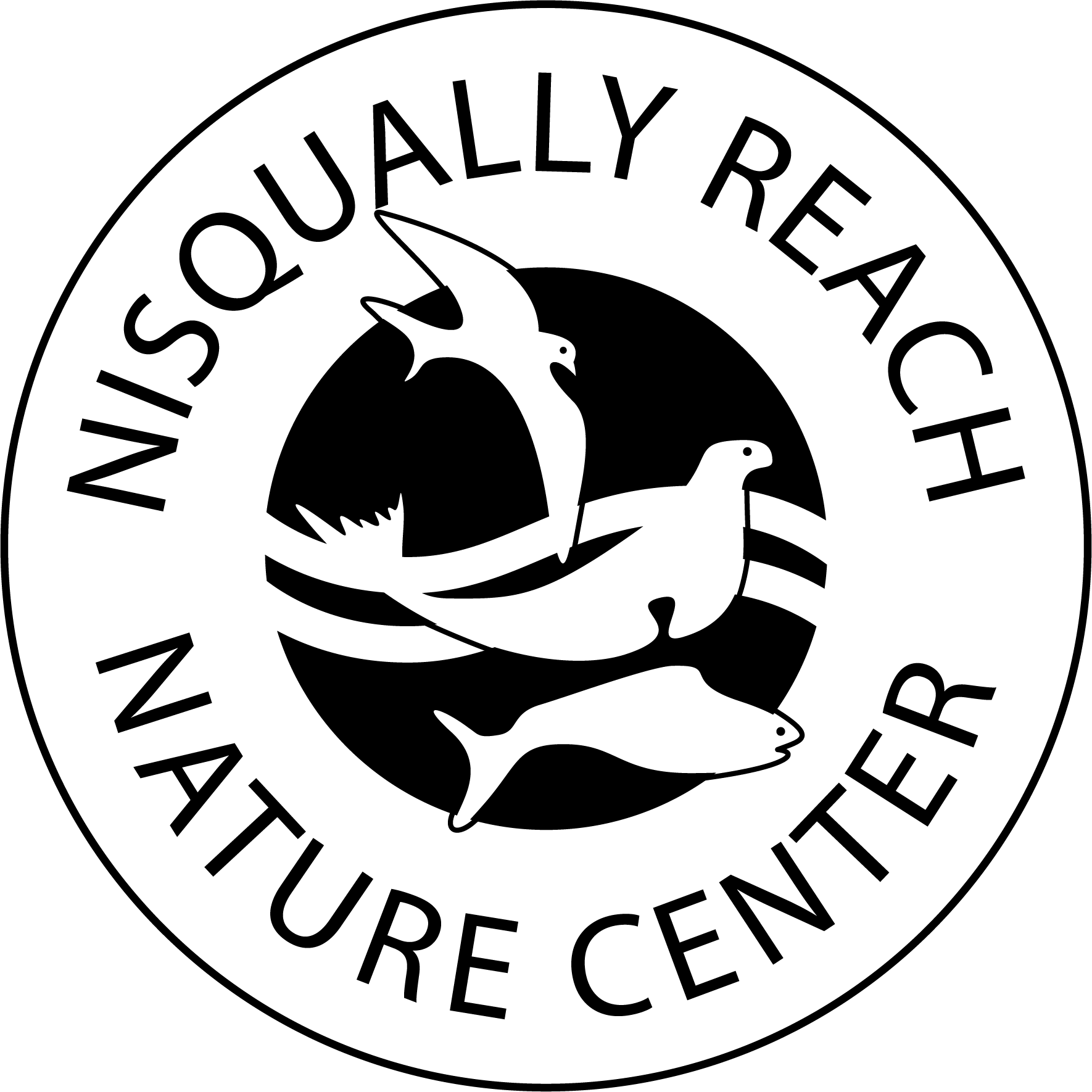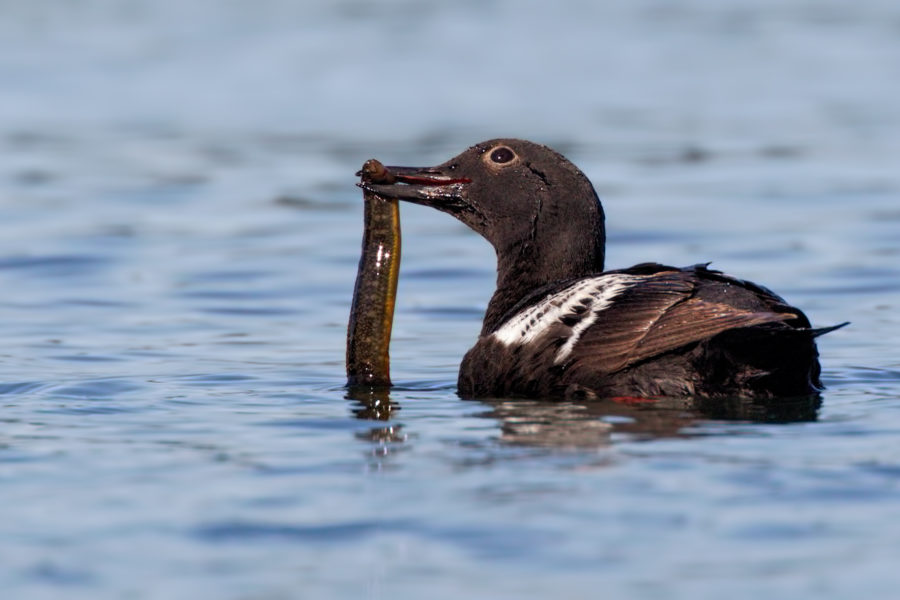What are Pigeon Guillemots?
Pigeon Guillemots are the only black and white seabird with bright red feet that breed on land in South Puget Sound. Most are more comfortable in and under the water than in the air. Underwater, they use their wings as flippers to swim up to 150 feet deep chasing after sculpins and gunnels, which are the most common food items. These burrow nesting birds return to the same bluffs each year and typically lay only two eggs each. Both the male and female incubate the eggs for about four weeks and care for the young until they are ready to leave the nest after 4-6 weeks.
Why are we monitoring them?
The purpose of the monitoring is to collect baseline data for South Puget Sound as part of a larger regional effort to detect trends and detect changes in Pigeon guillemot populations. They are considered an “indicator species” of the Salish Sea because they can be used to monitor ecosystem change and ecosystem health, biodiversity, condition of habitats, and climate change. These birds feed their young primarily sculpins and gunnels, which are both bottom-dwelling fish species commonly found in nearshore habitats of the Salish Sea where the guillemots fish. There is little to any formal research being conducted on pigeon guillemots and as a result, we know little about their populations and current status, thus it is important that we gather baseline information about their population in order to provide Washington State Department of Fish & Wildlife with the information needed to determine whether their numbers growing or declining. This monitoring effort began during the summer of 2013 and was carried out by citizens like you! This research is based directly on the work that folks up on Whidbey started back in 2002. More recently, the efforts have expanded to seven areas and the Salish Sea Guillemot Network formed. The ultimate goal is for this effort to continue expanding throughout the state and potentially to surrounding areas such as British Columbia and Oregon.
Survey Locations
From the Nisqually Reach to Totten Inlet, we conduct weekly surveys for an hour at 40 sites during the breeding season (June through September). During the rest of the year, we survey once a month so that we can better understand where these birds go in the non-breeding season and when they return to their nesting colonies.
Data Collection
The primary data collected at each survey site are observations of behaviors, total counts of birds, burrow visits, and fish deliveries. From these numbers, we are able to determine active burrows from non-active sites. Surveyors also collect information about disturbances and the bird’s responses to the disturbance. During the non-breeding season, we conduct monthly surveys for each colony to document where Pigeon Guillemots spend time during the non-breeding season, when they switch from breeding plumage to non-breeding plumage and back, and when they return to breeding colonies. Surveying year-round allows us to better understand the biology of these birds. Since 2016, we have been using an online system to compile the data, which provides real-time data visualization of the activity at every colony throughout the breeding survey period.
Here’s a preliminary look at the results of this year’s survey efforts.
SSGN 2021 End of Season Event 10-19-2021 Final
Want to Get Involved?

If you are interested in learning more about these beautiful birds or volunteering for summer surveys, please contact us at pigu@nisquallyestuary.org. You can also reach us by phone at (360) 459-0387. If you would like to subscribe to our email list and get program updates, click here. For internships click here.
Our Past Research
2019 Pigeon Guillemot Survey Report
2016-2018 Pigeon Guillemot Survey Report
2014 Pigeon Guillemot Survey Report
2013 Pigeon Guillemot Survey Report
Volunteer Resources

